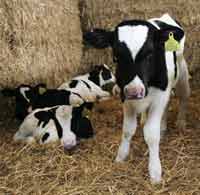Control calf scours in five steps

A new five-step approach to improving and tackling the management of calf scour problems is helping dairy farmers cut the cost of the disease.
Working with farm animal practices across the UK, Intervet/Schetring Plough Animal Health is promoting a simple, five-set approach to tackling disease problems.
According to the company’s livestock adviser, Paul Williams, the sheer prevalence of infectious scour agents in the farms environment means it is vital calf producers keep scour prevention programmes under constant review.
“Calves are the future of the herd and an important part of keeping dairy and suckler unit performance on track is preventing and controlling calf scour. Evaluating herd and farm management practices, properly diagnosing any infectious bacteria or viruses and checking colostrum feeding practise are essential steps in resolving this costly problem,” he says.
Results from Intervet/Schering-Plough taken from 400 farms showed rotavirus being the most common agent, detected in 36% of samples, cryptosporidia in 29% and coronavirus in 26% of all samples.
“On-site testing kits are now available, which means your vet can often give you a diagnosis of what might be causing a scour problem within minutes of collecting the samples.
“This diagnostic, coupled with a discussion about calf management and the type of animals affected will often lead to a pretty accurate diagnosis of any problem on farm. And once you’re reasonably sure of the cause of the scour outbreak you can then out an action plan in place to reduce the chances of it happening again,” he says.
